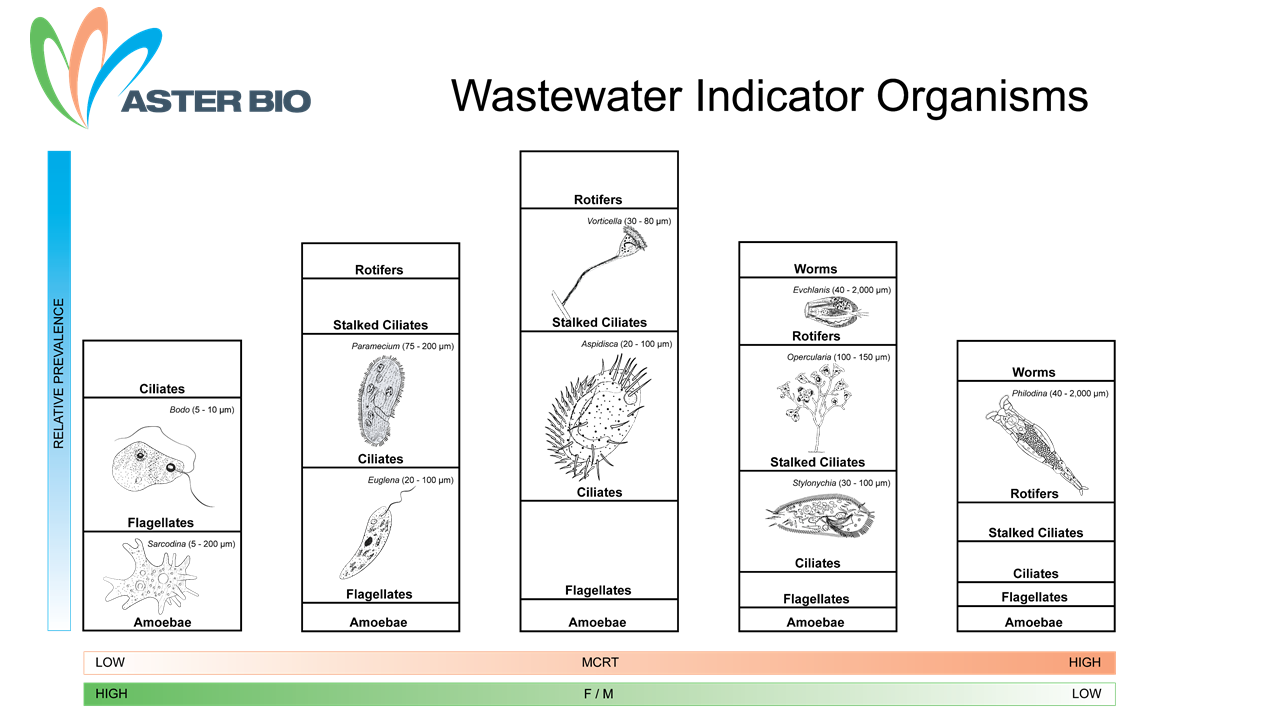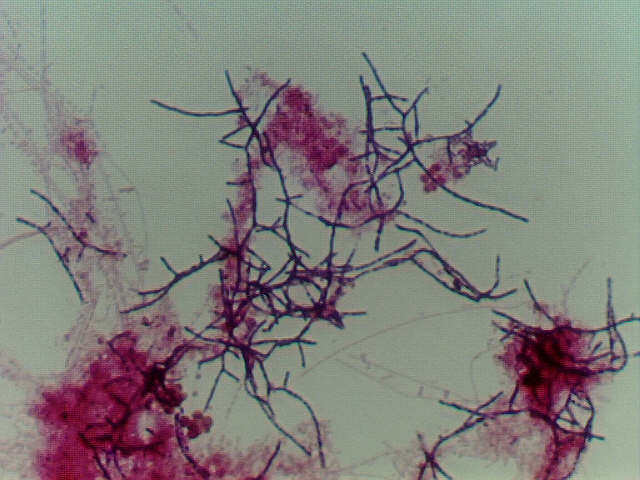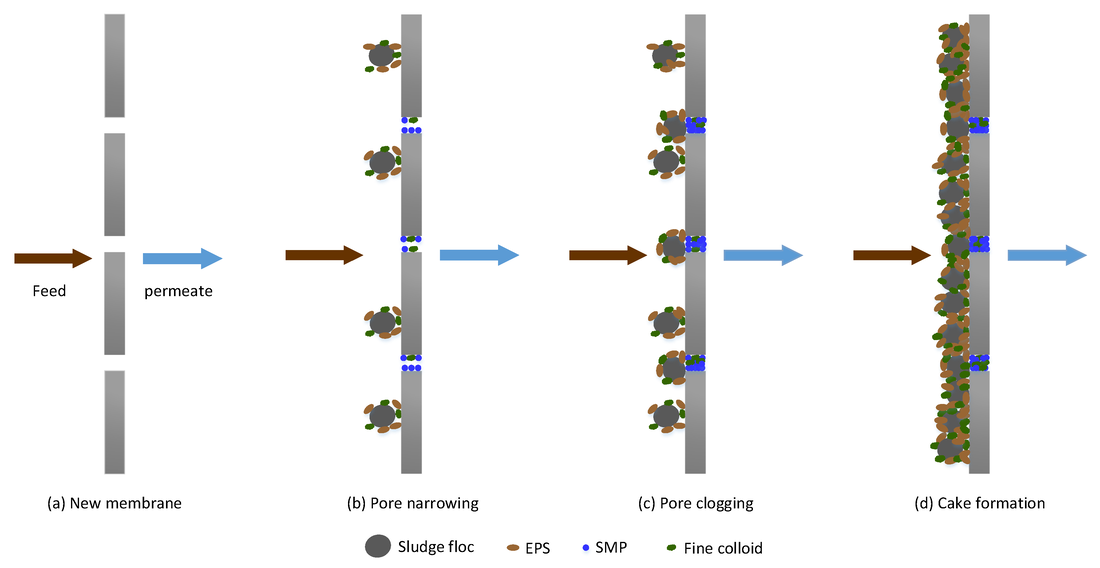Amoeba
Amoeba are slow moving single celled protozoa. With streaming cytoplasm, amoebae envelop free bacteria, organic particles, and other "food" sources. In wastewater, we often have "free" amoeba which are jusAt the streaming cytoplasm inside a cell envelope. There is also the testate form which has a shell. The free amoeba are most common during early phases of growth, but you can see testate amoeba even with low F/M, mature systems.
Flagellates
A large and diverse group of protozoa, flagellates are grouped by how they move. Propelled by whip like flagella, these protozoa tend to "bounce" and move in what seems a somewhat random manner. With large flagellates or when using a phase contrast microscope, you can often see the flagella propelling the organism. Flagellates are seen early on the growth curve and tend to decrease in relative frequency as you move along the growth curve.
Free Swimming & Crawling Ciliates
Ciliates move faster and in a more purposeful manner than flagellates. They also tend to be larger and easier to observe with 10x and 40x objectives (100x and 400x magnification). When ciliates are the dominate protozoa, you will have floc forming, Dissolved Oxygen increasing, and a more mature biomass. In the exam, look for:
- Diversity - free swimming vs crawling
- How activate the ciliates are (how fast they are moving)
Stalk ciliates and suctorians are the ideal indicator protozoa for most wastewater systems. Present only in systems with good D.O., low soluble organics, and good floc forming conditions; stalk forms do not move and are easy to observe. These protozoa anchor to the floc and are only mobile in early phases and after shock events. Stalks are highly susceptible to shock events - pH swing and toxic compounds. So, note any change in their frequency. Note the following:
- Single stalk forms - most common
- Colonial stalks - if seen, you have great quality water
- Suctorians - similar to a stalk, but look like a pin cushion and stab/suck cytoplasm from passing flagellates and ciliates. These are very fun to watch if you have a few minutes.
Everybody loves the rotifers and tardigrades (water bears). They are easy to see and interesting to watch. If they become the dominant indicators, you are probably tilting toward an old sludge. Also they are more resistant to shocks than stalk forms, so you can have some problems and still see rotifers.
Floc Size & Density
It is also important to note the floc. How big are the floc particles (you don't have to get a precise measurement, just use relative size from day to day). Also not floc density and can you see filaments extending from the floc. Inside the floc, filaments are not bulking and function as a structure to improve floc strength. Also not if there are free bacteria and pin flocs in the sample. Again, you need to note changes from day to day. And if you see something strange, look for a cause and definitely note the observation.




 RSS Feed
RSS Feed